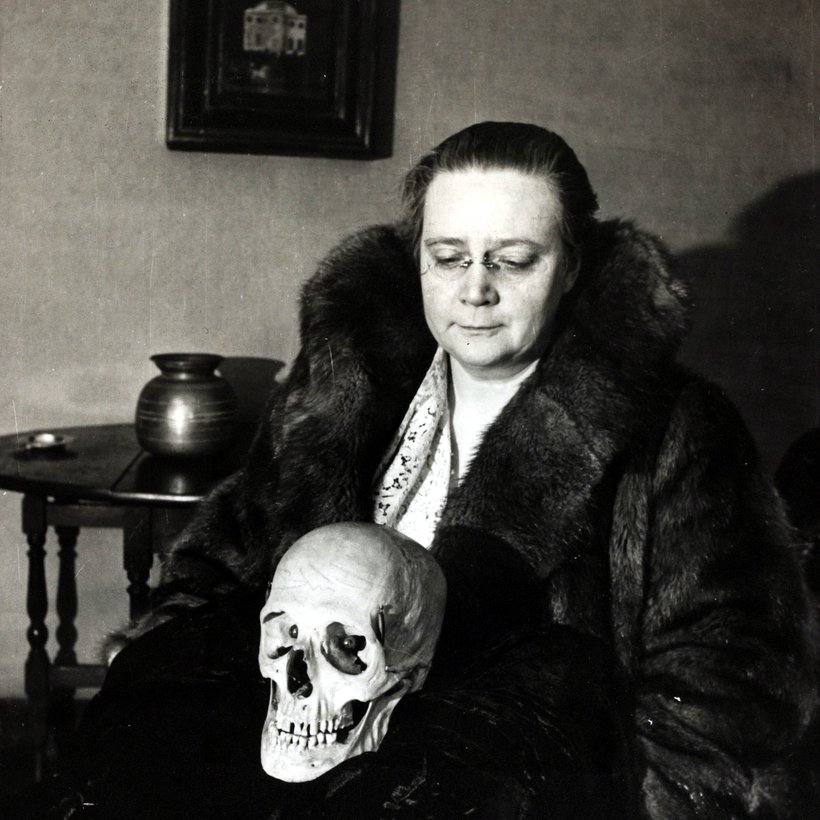The 11 novels and clutch of short stories featuring Lord Peter Wimsey are some of the most beloved examples of Golden Age detective fiction. Their author, Dorothy L. Sayers (1893–1957), presented me with a daunting figure when I first began to research her life and social circle for my book. One of the first women to receive an Oxford degree—with first-class honors, no less—she was witty, polished, and apparently able to do just about anything she wanted: advertising, fiction, theology, even learning medieval Italian in order to produce a translation of Dante’s Divine Comedy.
Circle of Influence
Taken as a lone genius, Sayers is a bit overwhelming. Place her in the context of the writing circle she founded at Oxford, and a different picture emerges. The group called itself the Mutual Admiration Society—so that, as Sayers explained, no one else could be the first to call them one. They were a remarkable group of women whose friendship lasted a lifetime and whose careers spanned literature, theater, history, education, midwifery, and advocacy.

Working in the Sayers archive held by Wheaton College, in Illinois, I finally understood what that lifelong conversation meant for Sayers. There, in a dense collection of letters and annotated drafts, is documented the collaboration between Sayers and fellow M.A.S. member Muriel St. Clare Byrne, a playwright and historian. Sayers had fallen out of touch with her friends by the 1920s, as she dealt with under-employment and difficult romantic relationships. Around the time she and Byrne revived their friendship, Sayers added new complexity to her Peter Wimsey novels by introducing a love interest in the character of Harriet Vane, only to stall for time, writing several more novels that didn’t advance the Wimsey-Vane relationship.
Taken as a lone genius, Sayers is a bit overwhelming. But in the context of her writing circle, a different picture emerges.
Then Byrne proposed collaborating on a play. In a burst of creativity, the two friends outlined a plot, deciding that it would feature Wimsey and Vane solving a murder mystery—on their honeymoon. Over the coming months, Byrne and Sayers worked intensely on the play, titled Busman’s Honeymoon: A Detective Comedy in Three Acts. (An eponymous novel, published shortly after the play debuted, was Sayers’s last featuring Wimsey and Vane.)

What I found thrilling is how vulnerable, tentative, and intellectually generous Sayers was. She relied on Byrne to get the emotional balance right in depicting not only a murder and honeymoon, but a marriage between equals. When Byrne’s partner, Marjorie Barber, read a draft and objected to the idea that Peter and Harriet spend their night on a dead man’s mattress, Sayers took her seriously as well (even though Byrne thought the objection was hilarious). In the end, the play’s emotional and structural symmetry pleased Sayers. She told Byrne, “It is, in its own small way, right. Probably you saw this side of it before I did.”
I love the Busman’s Honeymoon papers because they show, in real time, how being in communities and relationships changes people. Sayers’s work was ever more complex after this time, encompassing translation, religious plays, popular essays, and more; and I suspect, now, that it might all have been due to a weekend of dreaming up a play with a good friend.
Mo Moulton’s The Mutual Admiration Society: How Dorothy L. Sayers and Her Oxford Circle Remade the World for Women is out now from Basic Books


